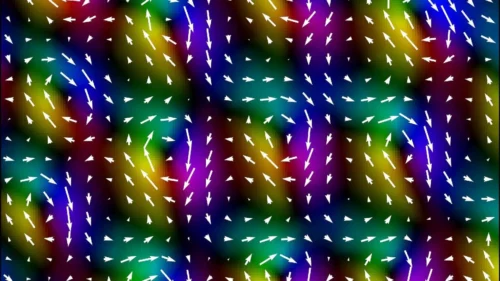Researchers have developed a new way to enhances storage efficiency in computers by 100 times using tiny magnetic vortices.

Magnets are used in computers to store data in computers. By exploiting the direction of the magnetic field (for example, up or down), microscopic bar magnets can each store one bit of memory as a zero or one, which is the basis of computer language.
Researchers have been working on replacing these bar magnets with a more efficient alternative to enhance the device output. They have replaced these bar magnets with tiny magnetic vortices. These vortices, which are as small as billionths of a meter, form in certain magnetic materials and have the potential to bring about a new generation of microelectronics for memory storage in high-performance computers.
Researchers created an artificial intelligence (AI) program to study the skyrmion behavior under different conditions. The AI program works with a high-power electron microscope at the Center for Nanoscale Materials (CNM), a DOE Office of Science user facility at Argonne. The microscope can visualize skyrmions in samples at very low temperatures.
The team’s magnetic material is a mixture of iron, germanium, and tellurium. In structure, this material is like a stack of paper with many sheets. A stack of such sheets contains many skyrmions, and a single sheet can be peeled from the top and analyzed at facilities like CNM. As these samples are cooled the skyrmion arrangement changes. Like bubbles in beer foam, some skyrmions became larger, some smaller, some merged, and some vanished. At minus 270, the layer reached a state of nearly complete disorder, but the order came back when the temperature returned to minus 60. This order-disorder transition with temperature change could be exploited in future microelectronics for memory storage.

Researchers estimated the skyrmion energy efficiency could be 100 to 1000 times better than current memory in the high-performance computers used in research. They believe that this kind of radical new way of thinking about microelectronics is key to next-generation devices.
Reference: “Thermal Hysteresis and Ordering Behavior of Magnetic Skyrmion Lattices” by Arthur R. C. McCray, Yue Li, Rabindra Basnet, Krishna Pandey, Jin Hu, Daniel P. Phelan, Xuedan Ma, Amanda K. Petford-Long and Charudatta Phatak, 21 September 2022, Nano Letters.
DOI: 10.1021/acs.nanolett.2c02275







